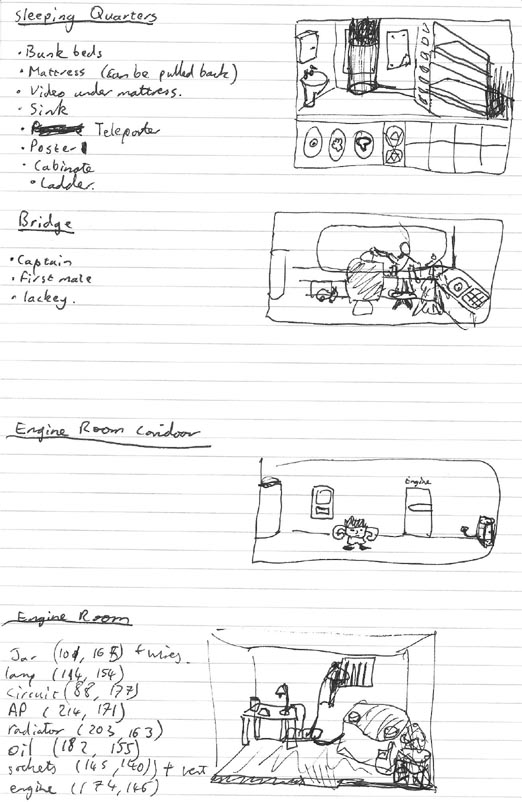Sorry for the delay in posting this one, I’ve been on holiday and the Blogger website is blocked by my phone’s internet connection.
SPOILERS ALERT! If you’ve not played Breakdown yet go do so before reading these posts as they contain, amongst other things, a full walkthrough!
So finally I’m there! I’ve got a game I’m happy with, it has all the bits in it that I wanted (within reason) to put in and I’ve played it through a couple of times to make sure it’s all working and makes sense. It’s almost time to submit it, but there’s a few last touches. Hopefully I’ve stuck to my plan and still have a day or two left.
First I send the game to as many of my friends as I can convince to play it and look for bugs. It’s amazing how many spelling mistakes and grammatical errors you can miss in the scores of times you’ve played through different areas. Plus they don’t know the way AGS works and so they won’t be following the same rules you will. Example: In Alan Saves Christmas there’s a door that you need to get through, and in order to do that you need to solve a couple of rather difficult puzzles. I was surprised when one of my friends had managed to complete the game in about 10 minutes with no hints from me, and on questioning him further discovered that he had never solved either of these puzzles. He’d simply clicked on the wall near the door and Alan had walked straight through the door to the area behind it, sending him to the next room.
I also try and get my brother to play through the game, mainly because I can watch him doing it. Watching someone else play can be very eye-opening as they’ll try things you’d never have thought of. Sometimes they’ll do something you didn’t realise could happen and you’ll find bugs that they don’t even know are problems.
Also this is the point where you turn debug mode off. Actually I never use it for testing so I usually switch it off when I start the project, but it’s really easy to forget.
Fix any last problems and test your fixes thoroughly. Now it’s time to show off. I use IconArt by Conware to draw custom setup and exe icons, write massive manuals that hardly anyone reads, write even longer EULAs that nobody reads (these essentially boil down to “Don’t sell my game and don’t pretend that it’s yours”, but they’re kind of fun to write and give me some form of legal standing if I ever wanted to threaten anyone who was misusing my games). Upload the game to my website and create a page for it. Test the download. Mirror it somewhere. Test that download.
Now it’s time to tell the world about it. Generally I make a games database entry first so that I’ll have somewhere to link my posts to (also because I love getting feedback and seeing how many times the game’s been downloaded). Then there’s posts, almost simultaneously in the completed games and MAGS threads with everything cross-linked. That’s maybe a little overboard but I’ve just spent 25 days working on a game, I want people to play it!
Now it’s time to sit back and watch the comments coming in, hoping nobody finds a major bug in the first day. Oh, and this is also the time you promise yourself you’ll never do another time-limited game again.
Fin.








